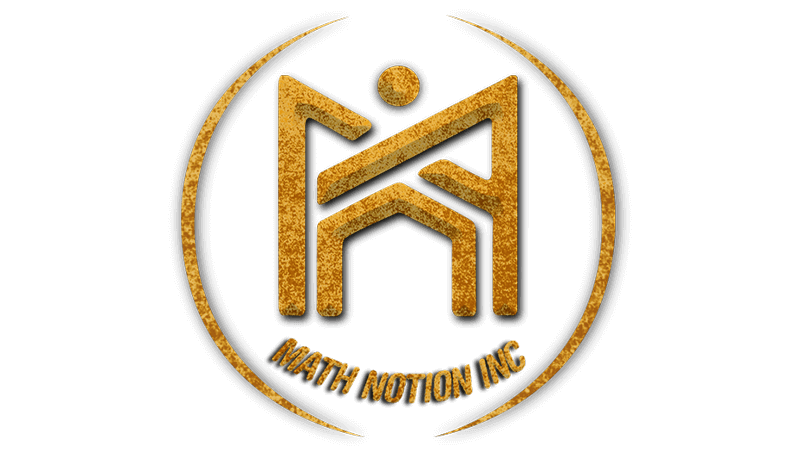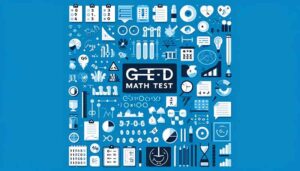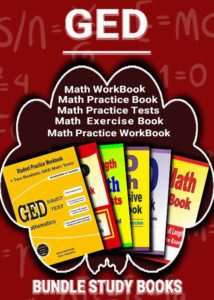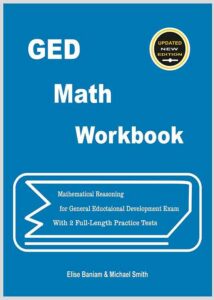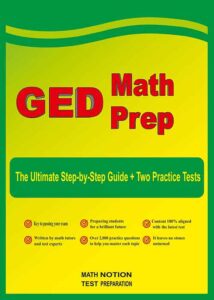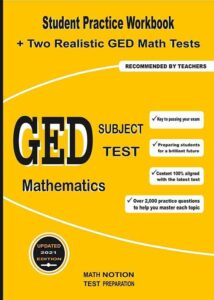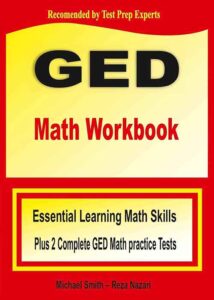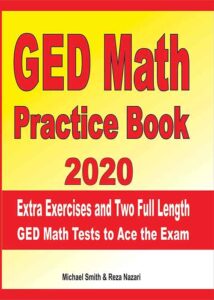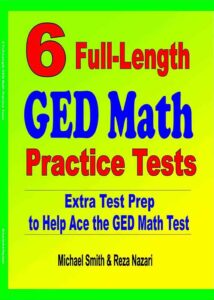
What math topics are covered on the GED?
Preparing for the GED math test can be daunting, especially if you’re not sure what topics will be covered. Understanding the specific areas of math that the test includes is crucial for practical study and preparation. This article will explore the math topics you need to know for the GED, provide detailed descriptions of each section, and offer tips and strategies to help you succeed. Whether you’re a student gearing up for the test or an educator assisting students, this guide will provide valuable insights to help you confidently navigate the GED math test.
1. Overview of the GED Math Test
1.1 Purpose of the GED Math Test
The GED math test assesses the mathematical skills and knowledge equivalent to those of a high school graduate. It is a critical component of the GED exam, which allows individuals who did not complete high school to earn a high school equivalency credential. The test covers various mathematical concepts, from basic arithmetic to more advanced topics like algebra and geometry.
1.2 Structure of the GED Math Test
The GED math test consists of two main sections. The first section allows the use of a calculator, while the second section does not. This format is designed to test both computational skills and the ability to solve problems without technological assistance. The test includes a variety of question types, which we will explore in detail later in this article.
2. Math Topics Covered on the GED
2.1 Algebraic Problem Solving
Algebraic problem-solving questions assess the ability to work with variables, equations, and functions. Topics include solving linear equations, understanding inequalities, and working with quadratic equations.
2.2 Quantitative Problem Solving
Quantitative problem-solving questions focus on arithmetic operations, ratios, proportions, and percentages. These questions test the ability to perform calculations and solve numerical relationship problems.
2.3 Geometry and Measurement
Geometry and measurement questions involve understanding shapes, angles, and spatial relationships. Topics include calculating perimeter, area, and volume and understanding the properties of geometric figures.
2.4 Data Analysis and Statistics
Data analysis and statistics questions assess the ability to interpret graphs, tables, and charts. Topics include measures of central tendency, variability, and probability.
3. Detailed Breakdown of Each Math Topic
3.1 Algebraic Problem Solving
3.1.1 Linear Equations
Linear equations are a fundamental component of algebra. It would help if you solve for variables in equations representing straight lines on a graph.
3.1.2 Inequalities
Inequalities involve solving expressions where the values are not equal. You will need to understand how to manipulate and solve these expressions.
3.1.3 Quadratic Equations
Quadratic equations involve variables raised to the second power. These equations can be more complex, requiring knowledge of factoring and the quadratic formula.
3.2 Quantitative Problem Solving
3.2.1 Arithmetic Operations
Arithmetic operations include basic mathematical operations such as addition, subtraction, multiplication, and division. These are foundational skills needed for more complex problem-solving.
3.2.2 Ratios and Proportions
Ratios and proportions involve comparing quantities and determining how they relate. This is essential for solving many real-world problems.
3.2.3 Percentages
Understanding percentages is crucial for solving problems related to discounts, interest rates, and data interpretation.
3.3 Geometry and Measurement
3.3.1 Perimeter, Area, and Volume
It would help if you calculated various shapes’ perimeter, area, and volume. This includes understanding the formulas for different geometric figures.
3.3.2 Properties of Shapes
Understanding the properties of shapes, such as angles, sides, and symmetry, is essential for solving geometric problems.
3.3.3 Coordinate Geometry
Coordinate geometry involves graphing points, lines, and shapes on a coordinate plane and understanding their relationships.
3.4 Data Analysis and Statistics
3.4.1 Interpreting Graphs and Tables
You must interpret data presented in graphs and tables, understand trends, and conclude the information provided.
3.4.2 Measures of Central Tendency
Measures of central tendency include mean, median, and mode. You will need to calculate these measures and understand their implications.
3.4.3 Probability
Probability involves understanding the likelihood of events occurring. You must calculate probabilities and know how they relate to real-world situations.
4. Preparation Strategies for the GED Math Test
4.1 Study Materials and Resources
To prepare for the GED math test, it’s essential to use various study materials and resources. These include:
- Official GED Study Guides: Comprehensive coverage of all test topics.
- Online Courses: Websites like Khan Academy offer free courses that cover GED math concepts.
- Tutoring Services: Professional tutors can provide personalized instruction and support.
4.2 Practice Tests
Taking practice tests is one of the most effective ways to prepare for the GED math test. Practice tests help you familiarize yourself with the test format and identify areas where you need additional study. Many websites offer free, paid practice tests designed explicitly for the GED math test.
4.3 Time Management Tips
Effective time management is crucial for completing the GED math test within the allotted time. Here are some tips:
- Create a Study Schedule: Allocate specific times each day for studying and stick to your schedule.
- Focus on Weak Areas: Spend more time studying topics that you find challenging.
- Use Flashcards: Flashcards can help you memorize essential formulas and concepts.
5. Test-Taking Strategies for the GED Math Test
5.1 Approaching Different Question Types
Different question types require different strategies:
- Multiple Choice: Eliminate wrong answers to improve your chances of choosing the correct one.
- Drag-and-Drop: Carefully follow instructions and check your placements.
- Hot Spot: Pay close attention to the details of the graphic or chart.
- Fill-in-the-Blank: Double-check your calculations to ensure accuracy.
5.2 Managing Test Time Effectively
Managing your time effectively during the test is crucial. Here are some tips:
- Pace Yourself: Allocate a specific amount of time for each question and move on if you’re stuck.
- Answer Easy Questions First: Quickly answer questions you find easy to secure those points, then return to more challenging ones.
- Keep an Eye on the Clock: Regularly check the time to ensure you’re on track to complete the test.
5.3 Dealing with Test Anxiety
Test anxiety can affect performance, but there are ways to manage it:
- Practice Relaxation Techniques: Deep breathing and visualization can help calm your nerves.
- Be Prepared: Thorough preparation can boost your confidence and reduce anxiety.
- Stay Positive: Focus on your strengths and remind yourself of your progress.
6. Common Challenges and How to Overcome Them
6.1 Understanding Complex Concepts
Some GED math topics can be complex. Here’s how to tackle them:
- Break It Down: Simplify complex problems into smaller, manageable steps.
- Seek Help: Don’t hesitate to ask for help from teachers, tutors, or online forums.
6.2 Improving Calculation Speed
Speed and accuracy are essential for saving time during the test:
- Practice Regularly: Frequent practice improves speed and accuracy.
- Use Mental Math: Develop mental math skills for more straightforward calculations.
6.3 Building Confidence
Confidence is critical to performing well on the test:
- Set Small Goals: Achieve small study goals to build confidence over time.
- Reflect on Progress: Regularly review how much you’ve learned and improved.
7. Success Stories and Testimonials
7.1 Real-Life Success Stories
Hearing from those who have succeeded can be inspiring:
- Jane’s Story: Jane struggled with math but passed the GED math test by following a structured study plan and using online resources.
- John’s Story: John balanced work and study, and he aced the GED math test through consistent practice.
7.2 Tips from Successful Test-Takers
Advice from those who have succeeded:
- Stay Consistent: Consistency in studying is crucial. Set a routine and stick to it.
- Use Multiple Resources: Diversify your study materials to cover all topics thoroughly.
8. Frequently Asked Questions (FAQs)
Q1: How many questions are on the GED math test? A1: The GED math test consists of approximately 46 questions.
Q2: What types of questions are on the GED math test? A2: The test includes multiple-choice, drag-and-drop, hot spot, and fill-in-the-blank questions.
Q3: What topics are covered on the GED math test? A3: The test covers algebra, geometry, number operations, data analysis, and probability.
Q4: How should I prepare for the GED math test? A4: Use official study guides, take practice tests, and focus on improvement areas.
Q5: How can I manage my time during the test? A5: Pace yourself, answer easy questions first, and allocate time for more challenging questions.
By understanding the math topics covered on the GED and using adequate preparation and test-taking strategies, you can confidently approach the test and increase your chances of success. Consistent practice and a positive mindset are crucial to achieving your GED math goals.
